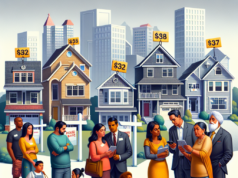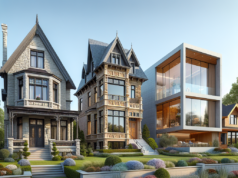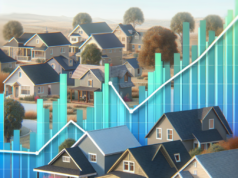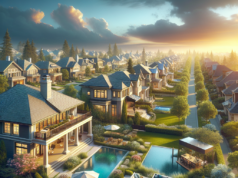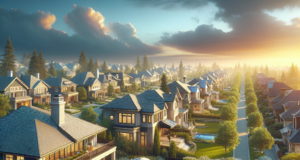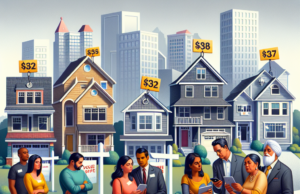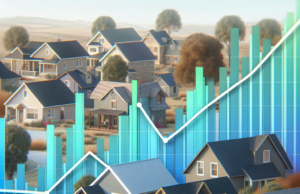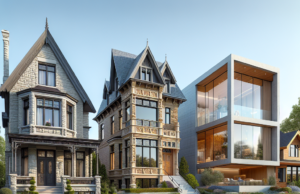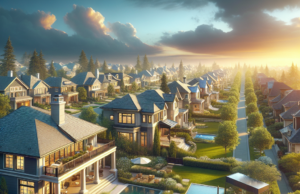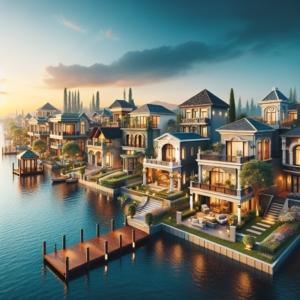
As we navigate through 2023, the real estate landscape is undergoing a transformative evolution, driven by a confluence of technological advancements, demographic shifts, and a growing emphasis on sustainability. The traditional paradigms of property development are being challenged, leading to innovative solutions that cater to the changing needs and preferences of society. This article delves into the shocking trends shaping the future of real estate developments, highlighting the implications for investors, developers, and consumers alike.
1. Introduction to the Evolving Landscape of Real Estate Developments in 2023
The real estate sector in 2023 is characterized by a dynamic interplay of various factors that are redefining how properties are conceived, developed, and marketed. Economic fluctuations, evolving consumer preferences, and the aftermath of the global pandemic have all contributed to a reimagined approach to real estate. Developers are now more than ever focused on creating spaces that not only meet functional needs but also resonate with the values of modern society. This evolution is evident in the rise of sustainable practices, technological integration, and a shift towards urban living, all of which are setting the stage for a new era in real estate.
2. The Rise of Sustainable Architecture: A Shift Towards Eco-Friendly Designs
Sustainable architecture has emerged as a cornerstone of contemporary real estate development, reflecting a global commitment to environmental stewardship. In 2023, an increasing number of developers are prioritizing eco-friendly designs that minimize carbon footprints and promote energy efficiency. This shift is not merely a trend but a necessity, as consumers are becoming more environmentally conscious and demanding greener living options. Innovations such as solar panels, green roofs, and sustainable materials are becoming standard features in new developments, appealing to a market that values sustainability. As a result, properties that incorporate these elements are not only more attractive to buyers but also command higher market values.
3. Technological Innovations: How Smart Homes Are Reshaping Living Spaces
The integration of technology into residential spaces has given rise to the concept of smart homes, fundamentally altering the way we interact with our living environments. In 2023, advancements in home automation, artificial intelligence, and the Internet of Things (IoT) are enabling homeowners to control various aspects of their homes—from lighting and security to heating and entertainment—through their smartphones or voice-activated devices. This technological revolution is enhancing convenience and energy efficiency, appealing particularly to tech-savvy consumers. As smart home features become more prevalent, developers are increasingly incorporating these technologies into their designs, recognizing the competitive edge they provide in a crowded market.
4. Urbanization Trends: The Increasing Demand for Mixed-Use Developments
As urbanization continues to accelerate, the demand for mixed-use developments is on the rise. These projects, which combine residential, commercial, and recreational spaces, are becoming increasingly popular as they offer a holistic living experience that caters to the needs of modern urban dwellers. In 2023, developers are recognizing the value of creating vibrant communities where residents can live, work, and play without the need for extensive commuting. This trend not only fosters a sense of community but also contributes to reduced traffic congestion and lower carbon emissions. As cities evolve, mixed-use developments are poised to become a staple in urban planning, reflecting a shift towards more integrated and sustainable living environments.
5. Demographic Shifts: Understanding the Impact of Millennials on Housing Markets
Millennials, now the largest demographic group in the housing market, are significantly influencing real estate trends in 2023. This generation prioritizes affordability, sustainability, and technology, shaping their preferences for housing options. As they enter their prime home-buying years, developers are adapting their strategies to cater to this cohort’s unique needs. The demand for smaller, more efficient living spaces that offer access to amenities and public transportation is on the rise. Additionally, millennials are more inclined to invest in properties that reflect their values, such as eco-friendly designs and smart home technologies. Understanding these demographic shifts is crucial for stakeholders in the real estate market as they navigate the evolving landscape.
6. Future Predictions: What to Expect in Real Estate Over the Next Decade
Looking ahead, the real estate sector is poised for continued transformation over the next decade. As sustainability becomes an ingrained principle in development practices, we can expect to see an even greater emphasis on eco-friendly designs and renewable energy sources. Technological advancements will likely further enhance the smart home experience, with innovations such as augmented reality and advanced security systems becoming commonplace. Urbanization will continue to drive the demand for mixed-use developments, fostering more integrated communities. Additionally, as demographic trends evolve, real estate professionals must remain agile and responsive to the changing preferences of consumers. The future of real estate promises to be dynamic, with opportunities for innovation and growth as stakeholders adapt to the shifting landscape.
In conclusion, the real estate developments of 2023 are marked by a profound shift towards sustainability, technological integration, and urbanization. As these trends continue to evolve, they will shape the future of living spaces, influencing how communities are designed and how individuals interact with their environments. Stakeholders in the real estate sector must remain vigilant and adaptable to harness the opportunities presented by these changes, ensuring that they meet the demands of a new generation of consumers. The future of real estate is not just about buildings; it is about creating sustainable, connected, and vibrant communities that enhance the quality of life for all.


